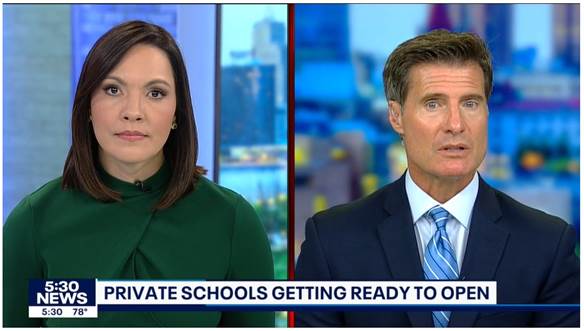If I were to guess as to what issue will be the most heavily discussed in the year’s upcoming legislative sessions across the country, I would wager that it will be ESAs.
ESAs, or Education Savings Accounts, seem to be the hottest thing on the education market right now—primarily because they undergird countless education options and innovations across the country.
A recent article by Emma Whitford in Forbes underscores just how popular ESAs are becoming. As the map below shows, ESAs are now available in roughly a quarter of U.S. states, and around a dozen of those programs have sprung up in the years since the Covid pandemic.

But while ESAs sound like a good deal, many of us are only scratching the surface in understanding their potential. In order to stay ahead of the curve on this popular education option, here are five ESA facts raised by Whitford that every astute parent and citizen should know:
1. Look for Accelerating Growth in ESA Programs Over the Next Year
According to Whitford, “33 state legislatures considered ESA programs last year.” This year, there are almost 100 ESA proposals being considered in state legislatures. With that many on the docket, it seems likely that we will see an expanded ESA map come this time next year.
2. As Education Discontent Grows Among Parents, ESA Demand Will Soar
Venture Capitalist Tony Wan tells Forbes that ESAs will grow the more parents realize what’s happening in their schools. Parents “feel [they] are not well served by existing and local options,” Wan says, and are in the market for better opportunities.
3. Popular Opinion on ESAs Is Likely Far Ahead of Legislative Action
According to education entrepreneur Amar Kumar, ESAs are a “’lagging indication’ of growing parental demands for more control over their children’s education.” Kumar tells Forbes:
The way I see it is—ESAs follow what’s happening on the ground. As more and more families are saying, ‘Hey, I want to tailor my child’s education the way I see fit,’ that’s when politicians come on board and say, ‘Okay, then you should be able to use your tax dollars to do that.’
4. Families Can Use ESAs on Multiple Education Options at the Same Time
Although an entire ESA can be used to pay tuition at the school of a student’s choice, the beauty of ESAs is that they allow students to diversify their education. If they like a math class in some online program, but want to attend a homeschool co-op for English literature and art, ESA funds can be used in both places.
Arizona mother Melissa Shah found this extremely helpful when pursuing various education options for her neurodiverse son. Using an ESA, Shah was able to enroll her son in both a private online school and a microschool, both of which had programs which met him at his academic levels in various subjects. “Being able to customize your child’s education allows both the child and the family to increase their quality of life,” Shah told Forbes.
5. ESAs Are Good for Business
Once ESAs make their entrance in a state, education options proliferate as innovative teachers and other entrepreneurs see parents shopping for options. “Once money actually starts flowing to the parents, and parents are purchasing things, we typically see that is when vendors—some tutoring centers, afterschool programs, music programs—get very interested in it, because now it’s a potential source of business and revenue for them,” Joe Connor, the founder of a platform called Odyssey, which connections parents with approved places to spend their ESA money, told Forbes.
In other words, ESAs shouldn’t just interest those concerned about children and their education options (or lack thereof). It should also interest those who want to see a state’s business climate expand and grow.
—
Image Credit: Deviant Art













